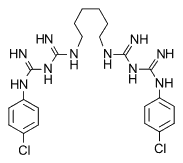I am writing to express my concerns about one of the questions addressed in "Clinical Issues" (vol 82, September 2005). The question asked whether chlorhexidine gluconate should be used for preoperative skin preparation in the vaginal area. The answer correctly pointed out the importance of following manufacturer's guidelines, as well as consulting AORN's recommended practices and US Food and Drug Administration and Association for Professionals in Infection Control guidelines for any product used. I would like to elaborate on this answer in two areas relative to the use of vaginal prep solutions.
First, I think it is important to mention that neither chlorhexidine gluconate nor povidone-iodine scrub solutions are approved for vaginal use. According to the manufacturers, because of their detergent components, chlorhexidine gluconate and povidone-iodine scrub solutions should only be used externally and, therefore, should not be used on mucous membranes, such as the vaginal area. (1,2) Povidone-iodine paint solution does not contain a detergent and may be applied safely to mucous membranes, (2) including the vagina if the patient is not sensitive to iodine. Chlorhexidine products have specific warnings on the bottle regarding the increased potential for allergic reactions, including irritation and sensitization, when used in genital areas. (1) I think it also is essential to note that the words, "do not use in the genital area" can be found on the containers of certain chlorhexidine products.
The second area of concern relates to the method of preoperative vaginal preparation. According to the manufacturer, the instructions for using chlorhexidine gluconate solution as a preoperative skin preparation are
This procedure should be followed whenever chlorhexidine gluconate is used preoperatively.
Although it would not be impossible, this technique would be extremely cumbersome to follow in prepping the vaginal area, and it also would be virtually impossible to execute without contamination. It is absolutely imperative that perioperative nurses who are responsible for performing vaginal preps be knowledgeable in aseptic principles and practices and demonstrate the utmost integrity in the application of this knowledge.
Notes
(1.) "Hibiclens information sheet," Regent Medical, http://www.regentmedical.com/ameri cas/hibiclens_information.html (accessed 26 Sept 2005).
(2.) "Betadine Microbicides," Purdue Pharma, LP, http://www.pharma.com/html /Our_products/For_hospitals.htm (accessed 26 Sept 2005).
SHARON ANN VAN WICKLIN
RN, BSN, CNOR, CRNFA
PERIOPERATIVE EDUCATION COORDINATOR
WILLIAMSON MEDICAL CENTER
FRANKLIN, TENN
COPYRIGHT 2005 Association of Operating Room Nurses, Inc.
COPYRIGHT 2005 Gale Group



